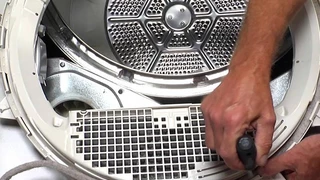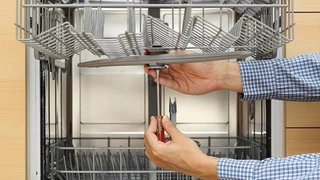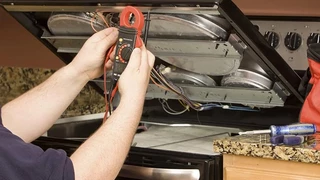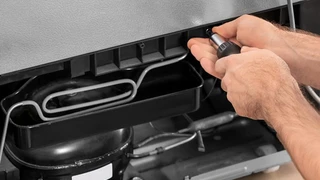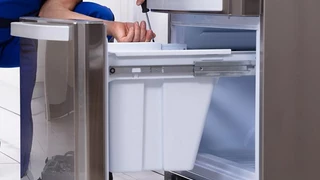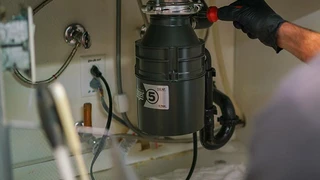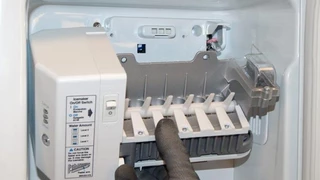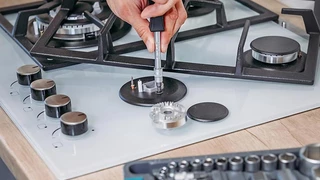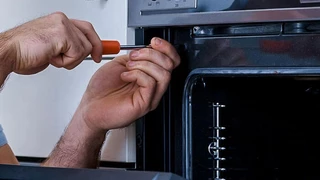Solving Non-Heating Dryer Situations: Replacing the Heating Element
The heating element is a crucial component of your dryer’s operation. It generates the heat needed to dry your clothes effectively. When this element wears out or develops faults, it can result in a non-heating dryer situation. Before proceeding with repairs, it’s essential to understand the common signs of a faulty heating element and take necessary safety precautions.
Understanding the Non-Heating Dryer Issue
A dryer that runs but doesn’t produce heat is a clear indication of a problem with the heating element. Other signs include clothes taking longer than usual to dry or coming out damp after a full cycle. In some cases, you may also notice a burning smell or see visible damage to the heating element.
Before attempting any repairs, make sure to disconnect the dryer from its power source. This will prevent accidental electrocution or damage to the appliance. It’s also a good idea to consult your dryer’s user manual for specific instructions and safety guidelines.
Diagnosing and Testing the Heating Element
To diagnose a non-heating dryer issue, you’ll need some basic tools such as a screwdriver, pliers, and a multimeter. Start by checking the power supply to ensure that the dryer is receiving electricity. If the power supply is functioning correctly, proceed to inspect the thermal fuse.
The thermal fuse is a safety device that prevents the dryer from overheating. If this fuse blows, it can disrupt the heating element’s function. Use your multimeter to test the thermal fuse for continuity. If there’s no continuity, replace the thermal fuse and see if that resolves the issue.
If the thermal fuse is functioning correctly, proceed to test the heating element for continuity. A lack of continuity indicates that the heating element is faulty and needs replacement.
Replacing the Heating Element
Replacing a faulty heating element requires some technical know-how and attention to detail. Make sure you have all the necessary tools and equipment before starting the replacement process.
First, gather your tools and materials. You’ll need a screwdriver, pliers, a multimeter, and a replacement heating element compatible with your dryer’s make and model. Next, ensure that you’ve disconnected the dryer from its power source.
Accessing the heating element assembly may require removing either the back panel or front panel of your dryer, depending on its model. Consult your user manual for specific instructions on how to access the heating element.
Once you’ve located the heating element assembly, carefully detach any wires connected to it. Take a photo or make a note of their placement so you can reconnect them correctly later on.
Loosen and remove any mounting screws securing the heating element in place. Take out the old heating element and replace it with the new one. Secure it with mounting screws.
Reattach any wires you previously detached, following your earlier notes or photos. Use your multimeter to verify continuity in the new heating element.
Reassemble your dryer by putting back any panels you removed earlier. Plug it in and turn it on to confirm that it’s now producing heat.
Common Heating Problems for Different Dryer Brands
Different dryer brands can have different issues when it comes to heating problems. Here are some examples of common heating problems for the brands you mentioned:
- General Electric: General Electric dryers are known for their durability, but sometimes the heating element can burn out. This can happen when the dryer is overloaded or left running for too long without being turned off.
- Samsung: Samsung dryers are designed to be energy-efficient, but a clogged or dirty filter or vent line can prevent them from heating properly. Cleaning the filter or vent line can often fix this issue.
- LG Electronics: LG dryers are equipped with advanced features, but one issue that can arise is a blown thermal fuse on the heater assembly. This safety device prevents the machine from overheating and protects your appliance and home from catching on fire.
- Roper Industries: Roper dryers are built to last, but a common issue is a blown thermal fuse. This safety device is designed to protect the dryer from overheating, and if it blows, it can disrupt the heating element’s function.
- Bosch: Bosch dryers are known for their precision engineering, but a faulty heating element can prevent them from heating properly. Replacing the heating element can often fix this issue.
- Electrolux: Electrolux dryers are designed with advanced technology, but a common issue is a faulty heating element. When this happens, the air that circulates in the dryer will not heat up.
- Maytag: Maytag dryers are built to be reliable, but one issue that can arise is a fault with the heating element. If the coil breaks or overheats, the heating element will likely stop working.
- Hotpoint: Hotpoint dryers are known for their affordability, but a common issue is a blown thermal fuse. This safety device is designed to protect the dryer from overheating, and if it blows, it can disrupt the heating element’s function.
- KitchenAid: KitchenAid dryers are designed with style and functionality in mind, but a common issue is a fault with the heating element. If the coil breaks or overheats, the heating element will likely stop working.
- Magic Chef: Magic Chef dryers are known for their compact size and versatility, but sometimes the heating element can fail. When this happens, the air that circulates in the dryer will not heat up.
- RCA: RCA dryers are designed to be affordable and reliable, but a common issue is a blown thermal fuse. This safety device is designed to protect the dryer from overheating, and if it blows, it can disrupt the heating element’s function.
- Amana Corporation: Amana dryers are built with quality and durability in mind, but a common issue is a faulty heating element. When this happens, the air that circulates in the dryer will not heat up.
- Fagor: Fagor dryers are known for their energy efficiency and eco-friendliness, but a common issue is a blown thermal fuse. This safety device is designed to protect the dryer from overheating, and if it blows, it can disrupt the heating element’s function.
- Miele: Miele dryers are designed with advanced technology and precision engineering, but a common issue is a faulty heating element. When this happens, the air that circulates in the dryer will not heat up.
- Haier: Haier dryers are known for their affordability and compact size, but a common issue is a blown thermal fuse. This safety device is designed to protect the dryer from overheating, and if it blows, it can disrupt the heating element’s function.
- Magic Chef: Magic Chef dryers are known for their compact size and versatility, but sometimes the heating element can fail. When this happens, the air that circulates in the dryer will not heat up.
- RCA: RCA dryers are designed to be affordable and reliable, but a common issue is a blown thermal fuse. This safety device is designed to protect the dryer from overheating, and if it blows, it can disrupt the heating element’s function.
- Amana Corporation: Amana dryers are built with quality and durability in mind, but a common issue is a faulty heating element. When this happens, the air that circulates in the dryer will not heat up.
- Fagor: Fagor dryers are known for their energy efficiency and eco-friendliness, but a common issue is a blown thermal fuse. This safety device is designed to protect the dryer from overheating, and if it blows, it can disrupt the heating element’s function.
- Miele: Miele dryers are designed with advanced technology and precision engineering, but a common issue is a faulty heating element. When this happens, the air that circulates in the dryer will not heat up.
- Haier: Haier dryers are known for their affordability and compact size, but a common issue is a blown thermal fuse. This safety device is designed to protect the dryer from overheating, and if it blows, it can disrupt the heating element’s function.
It’s important to note that these are just some examples of common issues and there may be other factors that can cause heating problems in dryers from these brands. If you’re experiencing heating issues with your dryer, it’s always a good idea to consult your user manual or seek professional assistance to diagnose and fix the problem.
The Role of Professional Dryer Repair Services
While replacing a faulty heating element is a relatively straightforward process, it’s not always a DIY job. If you’re not comfortable with technical repairs or encounter unexpected challenges during the replacement process, it’s wise to seek professional assistance.
Hiring a reputable repair service provider has several benefits. Professionals have the expertise and equipment to handle complex repairs safely and efficiently. They can also provide valuable advice on maintaining your appliance to prevent future issues.
Our company specializes in repairing household appliances in Chicago and its suburbs. If you’re facing a non-heating dryer situation, don’t hesitate to reach out to our experienced team for reliable and efficient repair services.
Remember to prioritize safety, adhere to the specific considerations of dryer repair, and perform regular maintenance to extend your appliance’s lifespan. For professional assistance and reliable dryer repair services, don’t hesitate to reach out to our experienced team. Keep your dryer running efficiently and enjoy the convenience it brings to your daily life.

